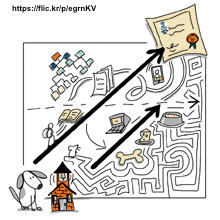This week we will slow down and take some time to look around. We’ll make some connections from the critical digital literacy topics to related links and resources. Part of the purpose of this week’s ‘slowing down’ is to provide an opportunity to scan the field of education, particularly in Ontario contexts, to see how teachers are modelling critical digital literacies in their professional practice. You can build your professional learning network by getting to know others in the field, not only those in your immediate physical environs, but those who may hold similar passions and interests. You’ll be invited, and gently nudged, out of your comfort zone, by making comments to the blogs of other classmates, whom you may not know. Although not required for this course, you are also encouraged to add a comment to a blog site of one of the Ontario educators linked from this week’s page. If you do this, make sure to add a link to this comment when you reflect on this in your final blog post in Week 12.
DATES: Nov 3rd – 9th
READINGS:
-
- Course site for week nine.
- Edugains Innovation Videos – select one or two to watch. Collect any ideas into a text or image document to add to, or enhance, your final blog post.
- How to access and use the Mindomo concept mapping tool – see videos and links on LAB page of the course site.
- Explore blogs from other educators, in Ontario and beyond (Collection of links) – this is the starting point only, so pick and choose how much to explore this week.
- Watch the Positively Social video about using social media and promoting digital citizenship in the classroom.
 TOPICS: So far in this course, you’ve critically analyzed and applied digital literacies to code break, meaning make, understand, and use digital tools and resources. This process is not linear, although this course has designed it that way. Integration and iteration is part of the process when teaching and learning about digital literacies and working to gain digital fluencies. Some teachers, and students, take a more direct route, while others meander through a maze. This week, you can take the route that best suits your learning needs. It’s time to reflect and connect – ideas, texts, activities, explorations, readings, and conversations.
TOPICS: So far in this course, you’ve critically analyzed and applied digital literacies to code break, meaning make, understand, and use digital tools and resources. This process is not linear, although this course has designed it that way. Integration and iteration is part of the process when teaching and learning about digital literacies and working to gain digital fluencies. Some teachers, and students, take a more direct route, while others meander through a maze. This week, you can take the route that best suits your learning needs. It’s time to reflect and connect – ideas, texts, activities, explorations, readings, and conversations.
ACTIVITIES:
- Begin tinkering and creating with the concept map tool MINDOMO. This software is licensed for use by Ontario educators, so it’s important to learn how to use this digital tool. You’ll apply this tool to create and examine your understanding of the five critical digital literacies and the subtopics, while exploring and building connections.
- read several blog posts from your classmates’ blog sites – select two and add a comment
- explore a list of suggested educator’s blogs is found on the Resources Page of this course site.
TASKS to COMPLETE:
- A1: Discussion post in D2L by Tuesday at 11:59 p.m.
- NO RESPONSES required in D2L this week.
- A2: ONE comment to your assigned classmate’s blog site. YES this makes a total of 3 comments on blog sites this week. WOW for wonderful conversations in open digital spaces!
REFLECTION:
- What have you learned about yourself as a critical digital learner? How have you showcased or shared your critical digital literacies?
- Where have your digital fluencies improved or been challenged?
- What has given you ‘joy in the making’ or what are you proud to share?
- How have you reached out for help or looked for more information to assist your learning?
